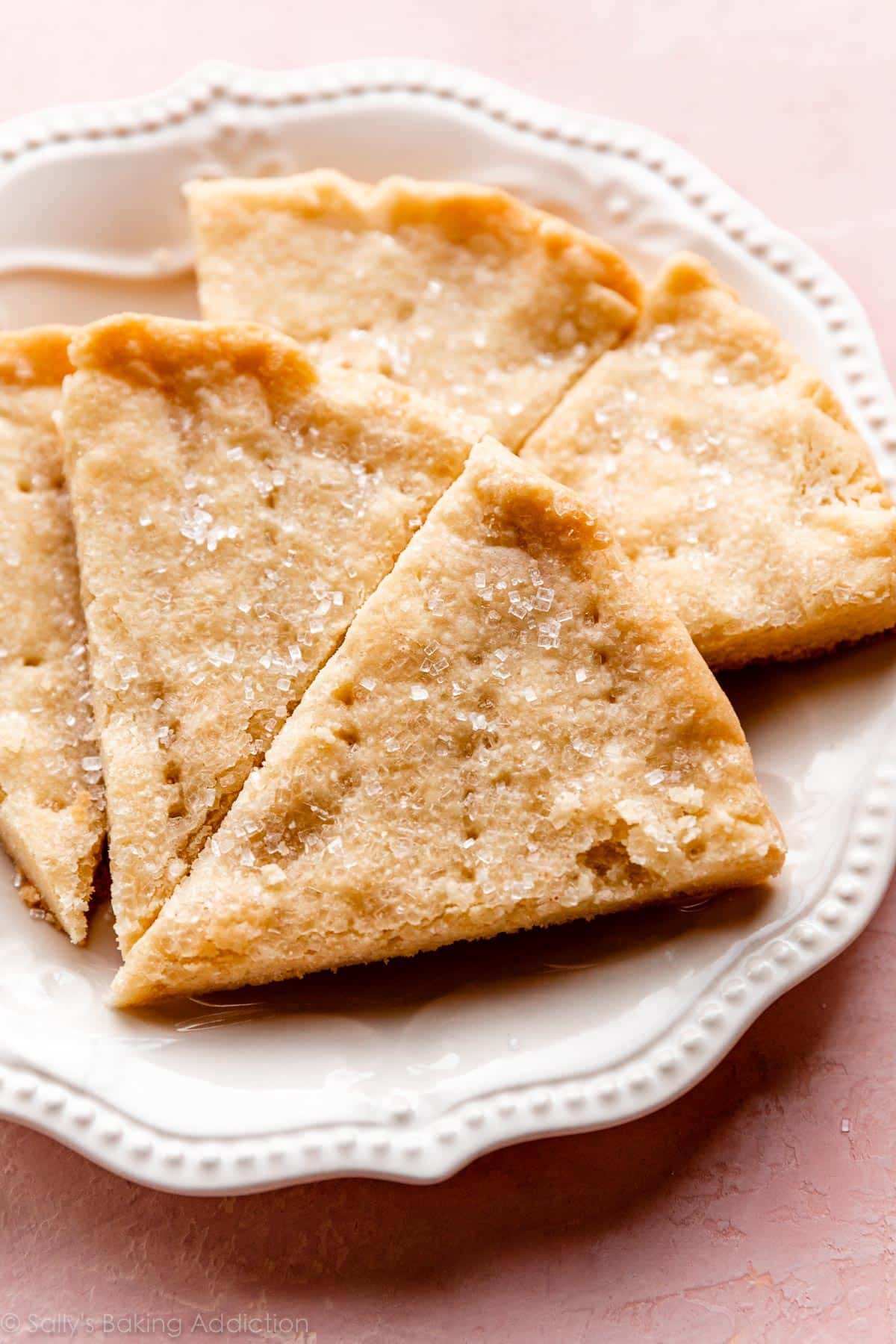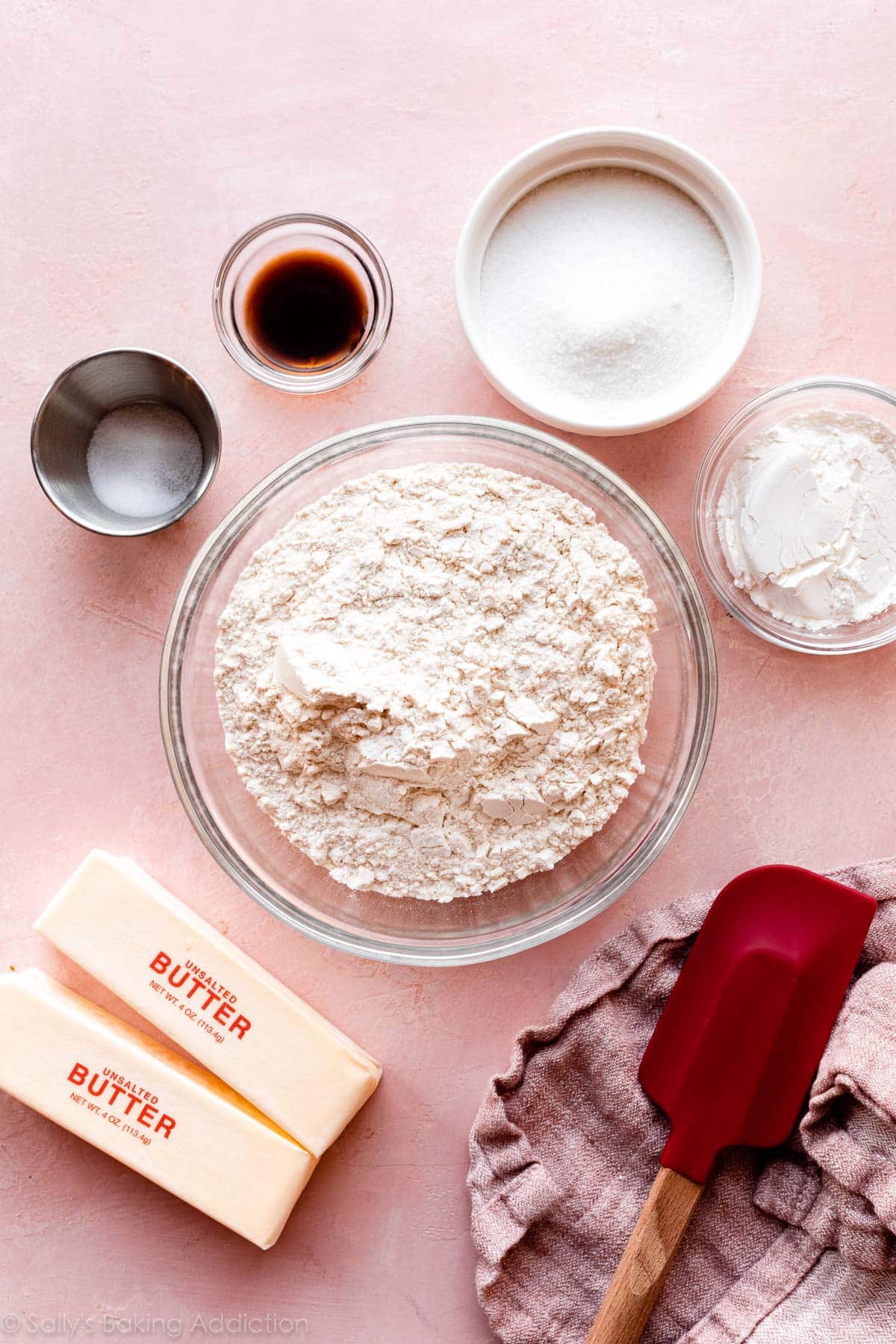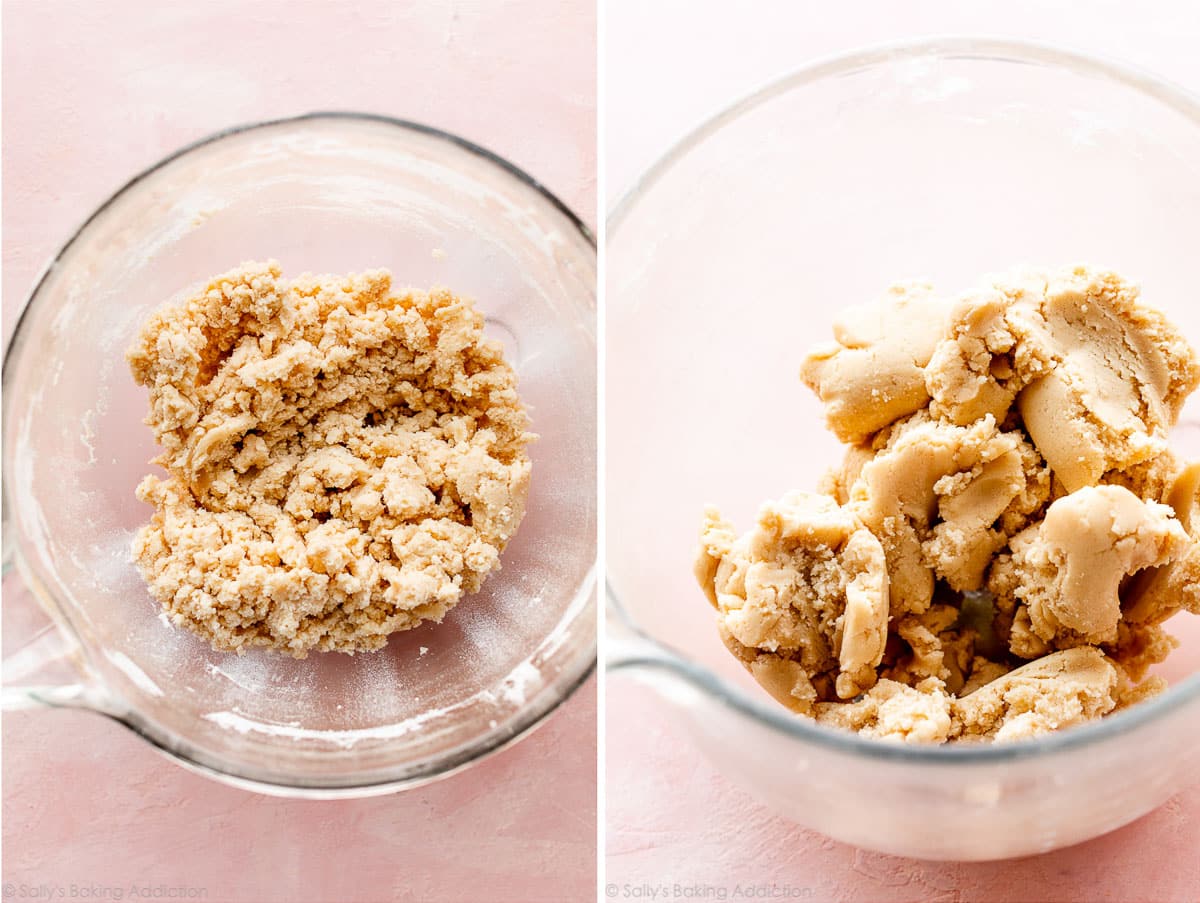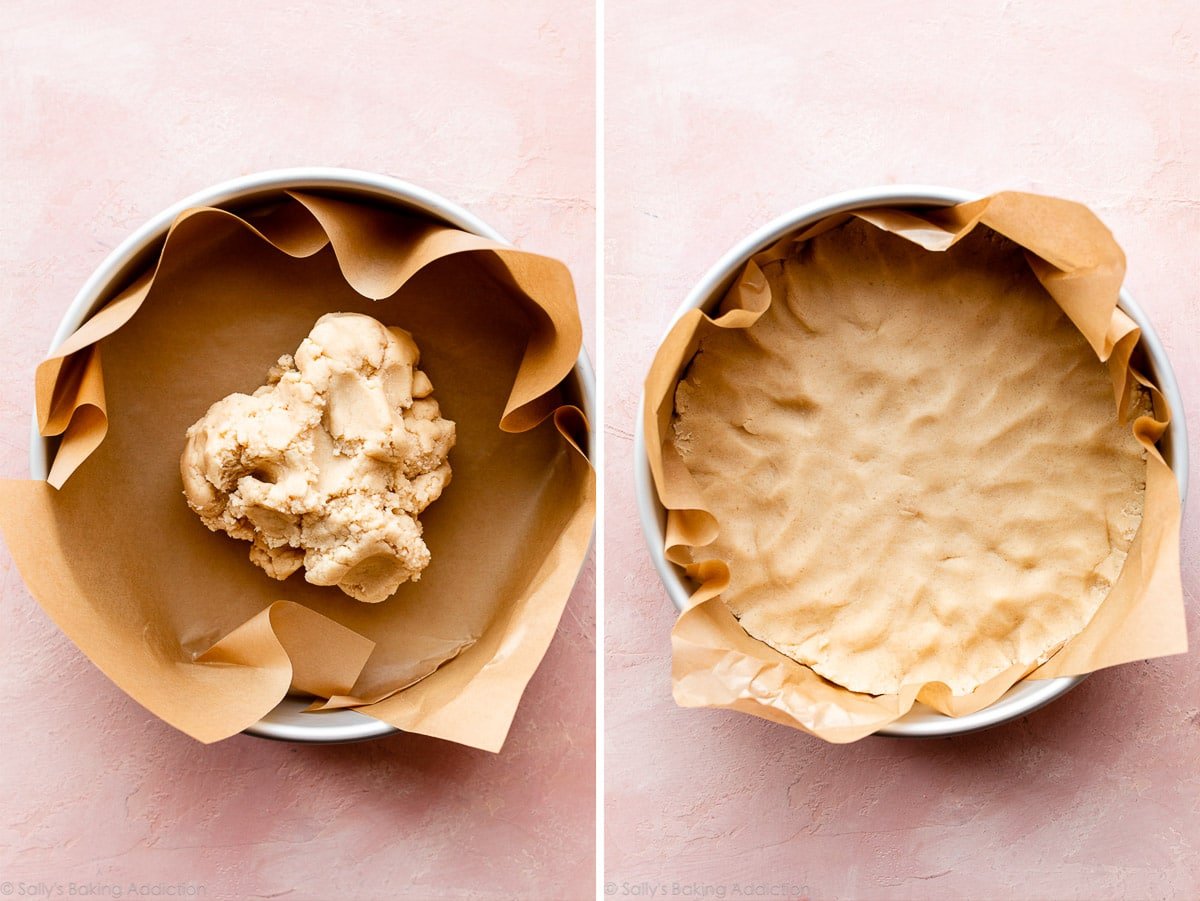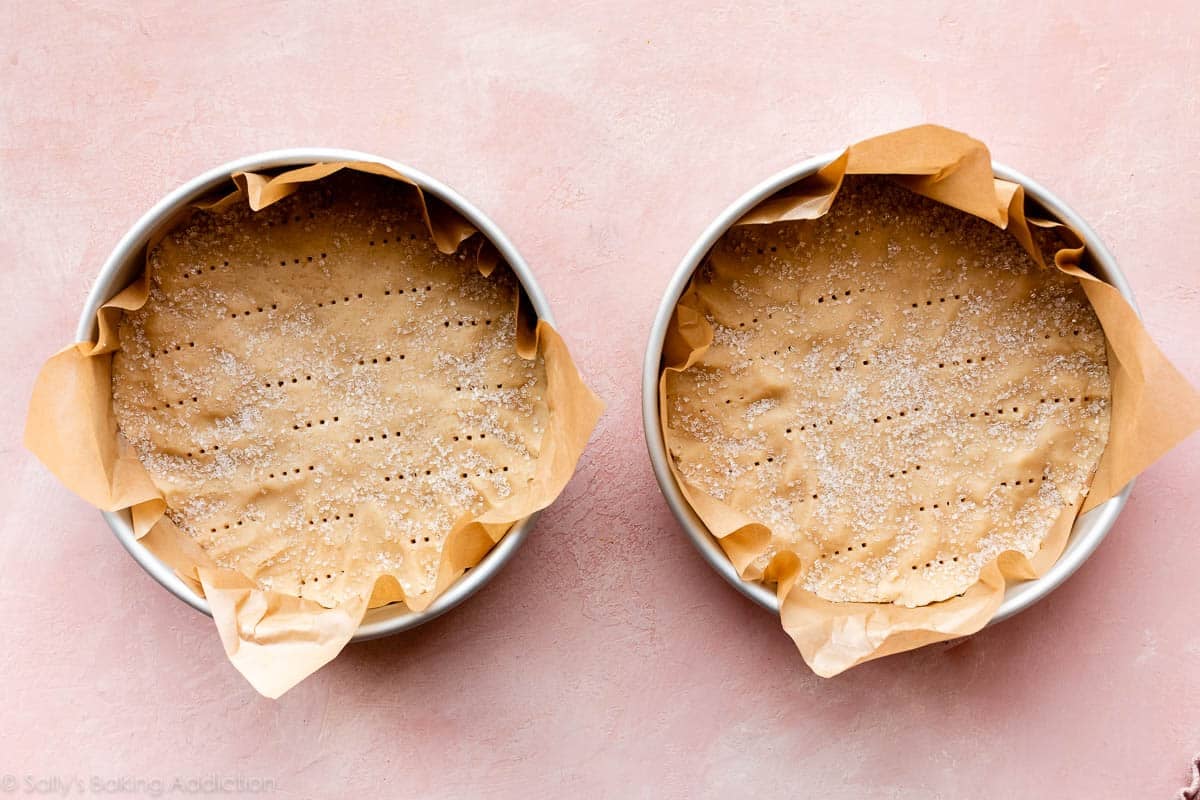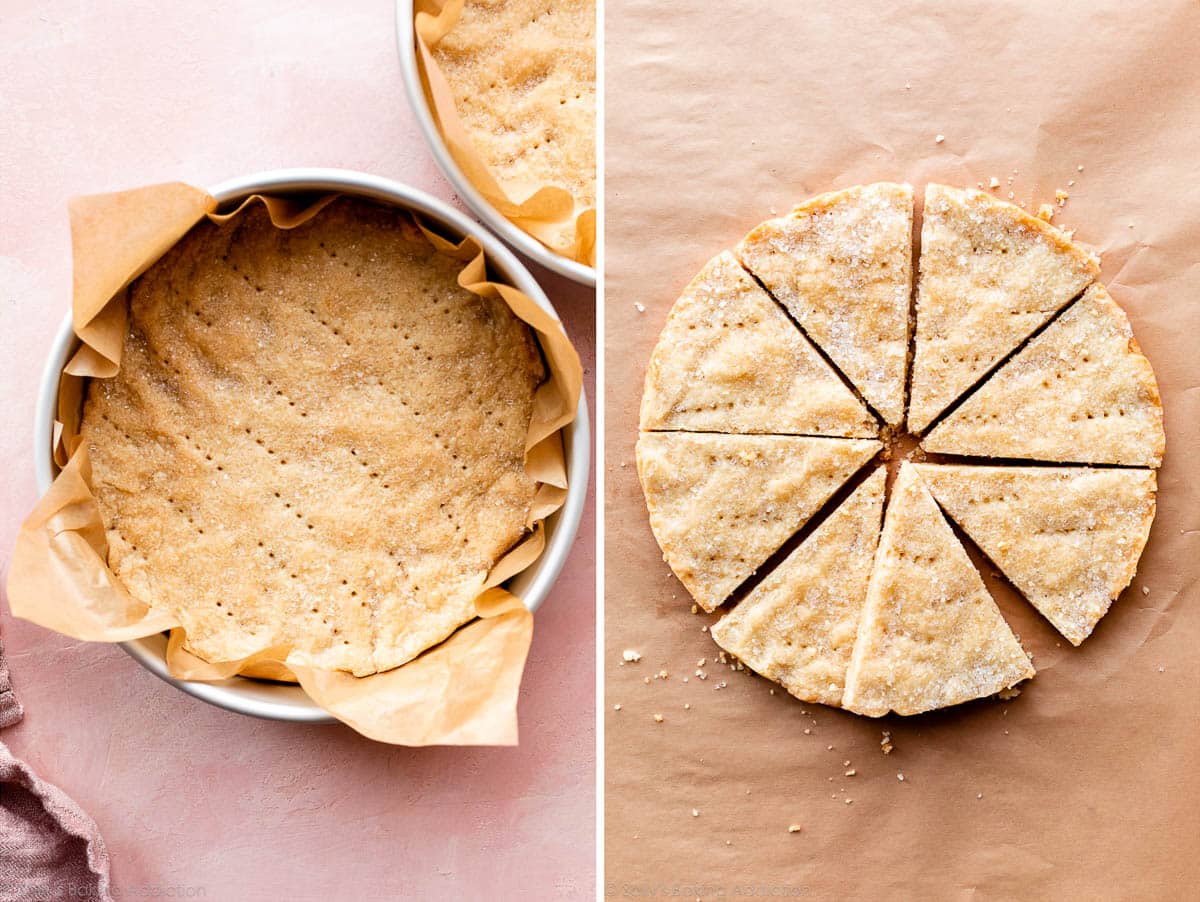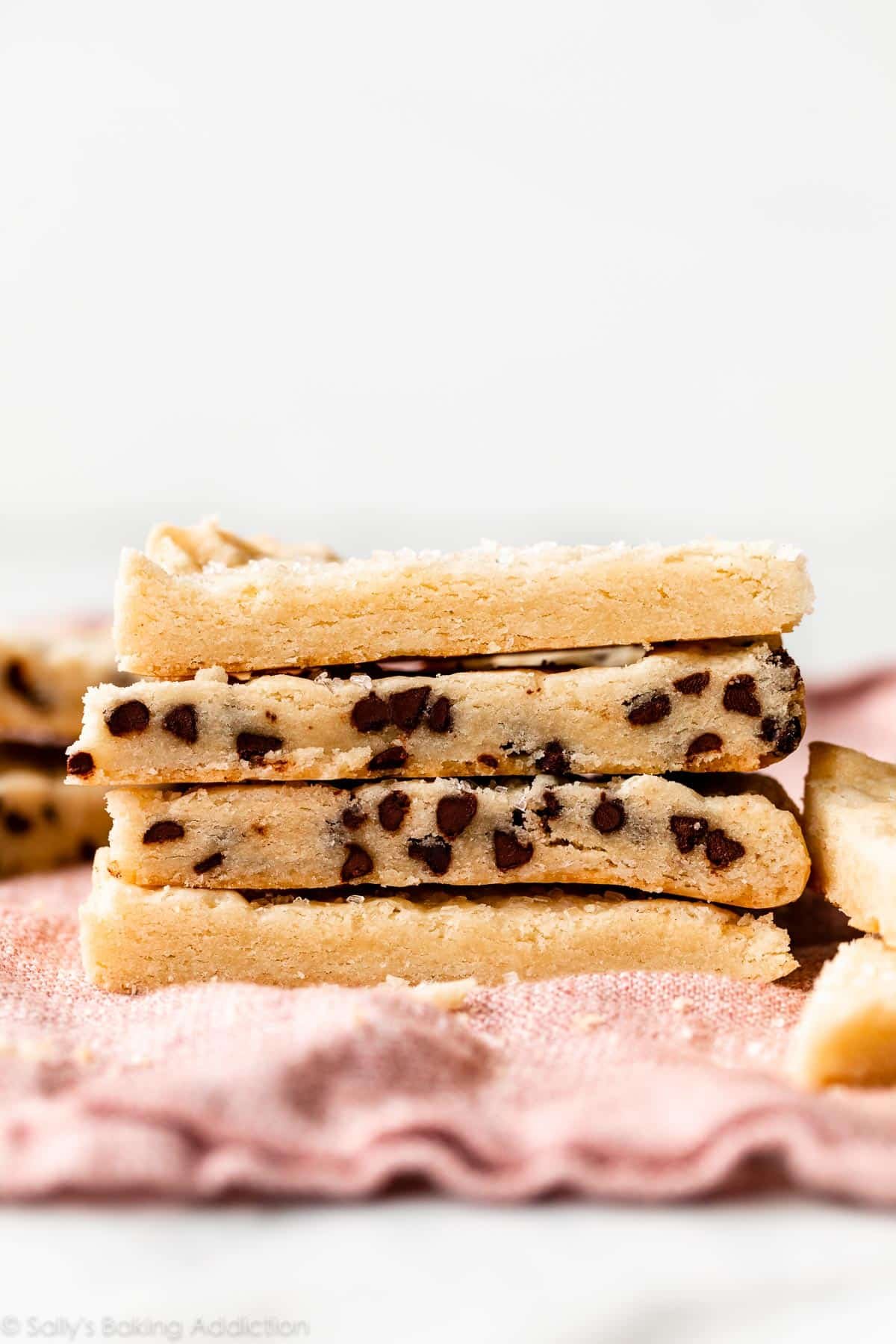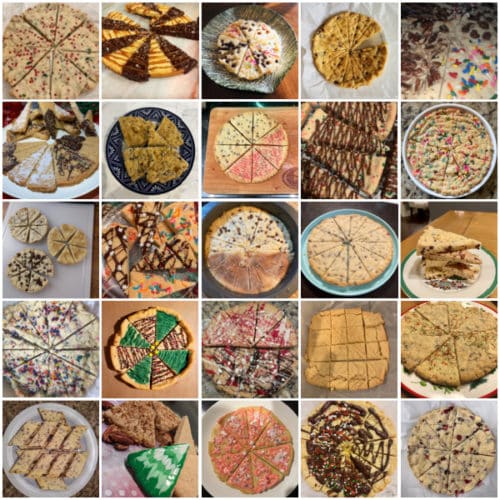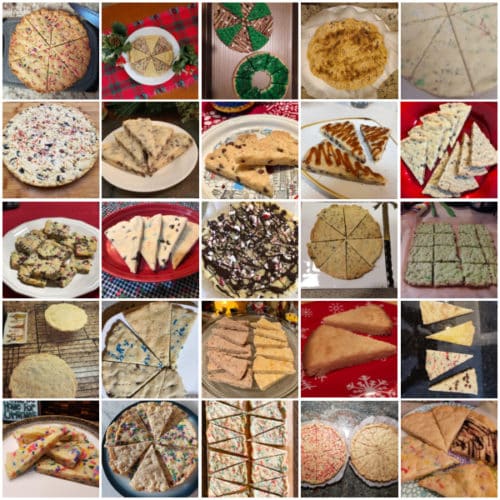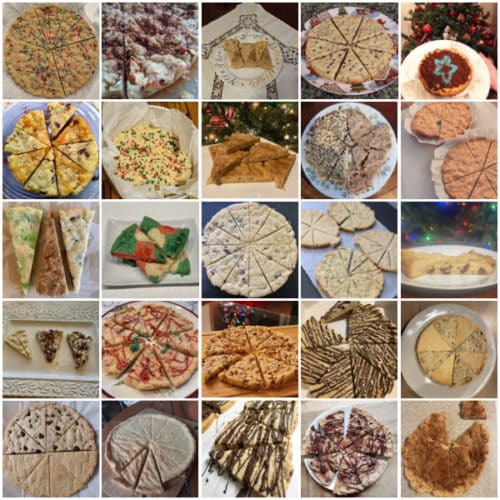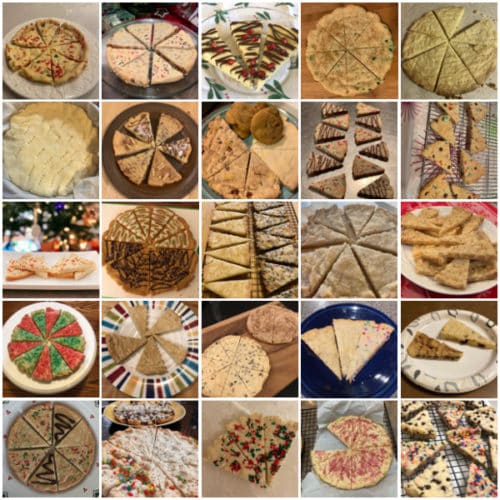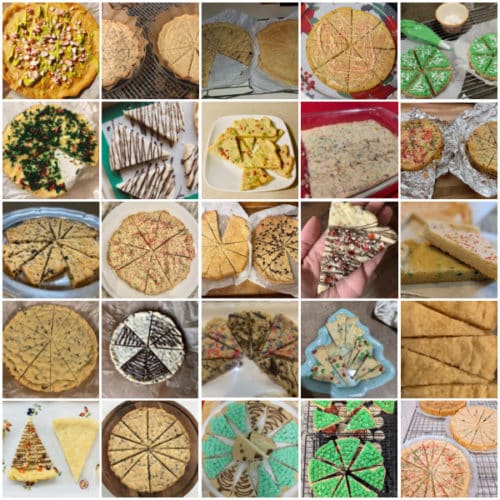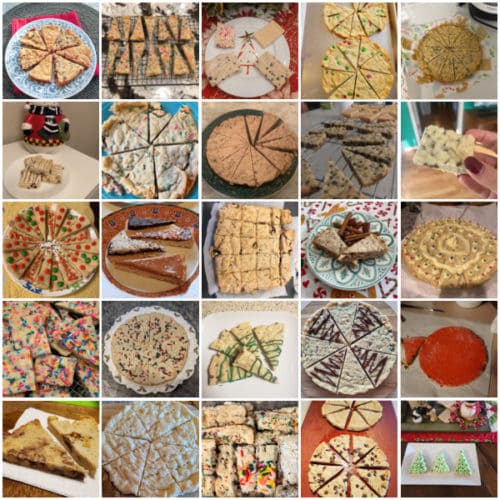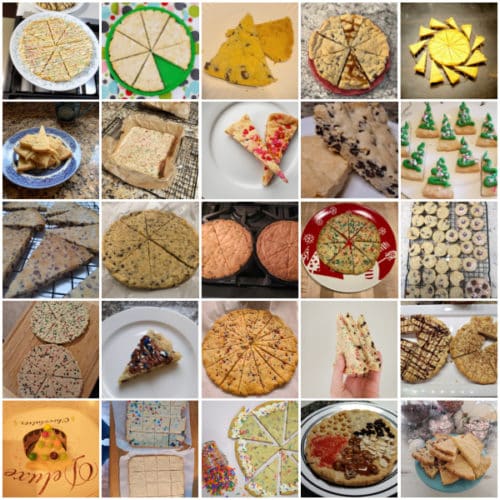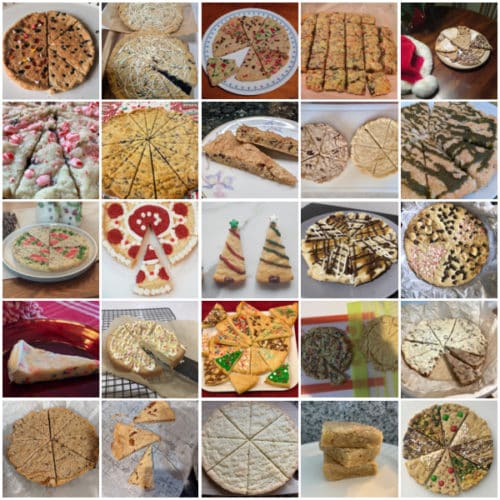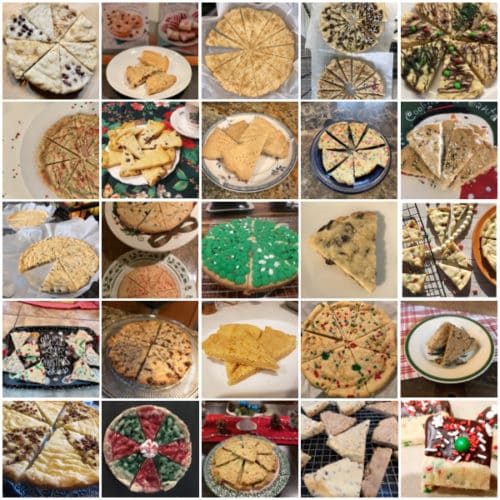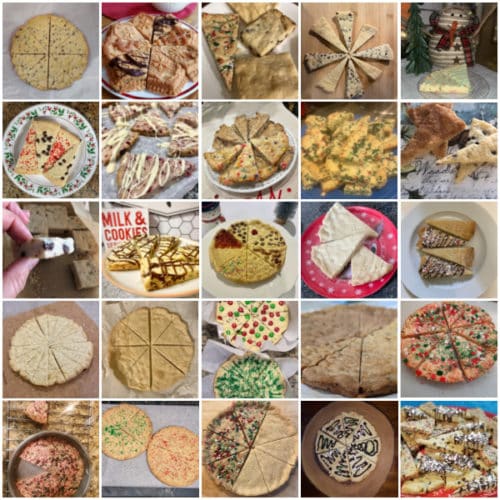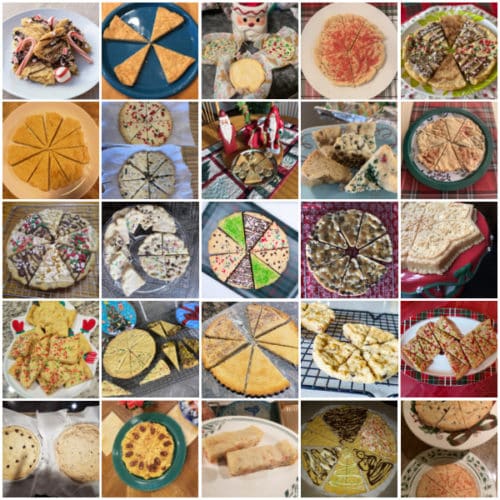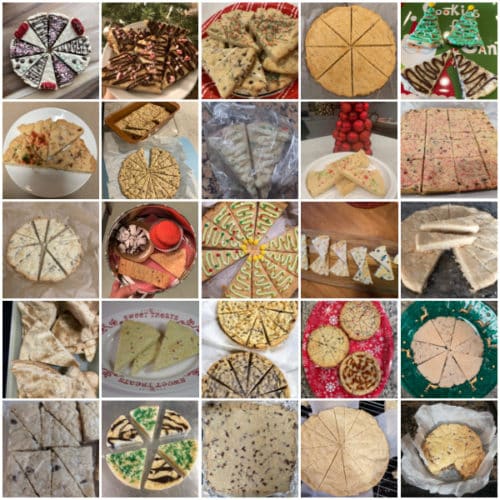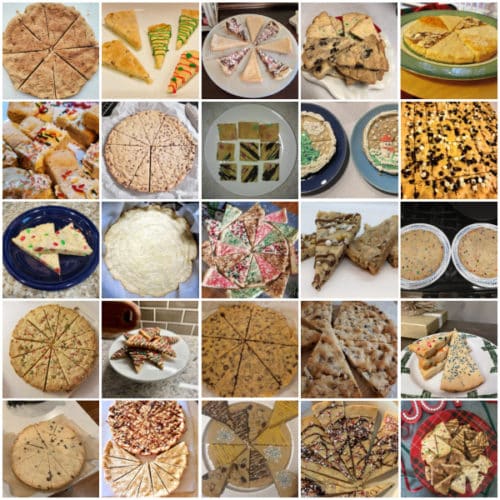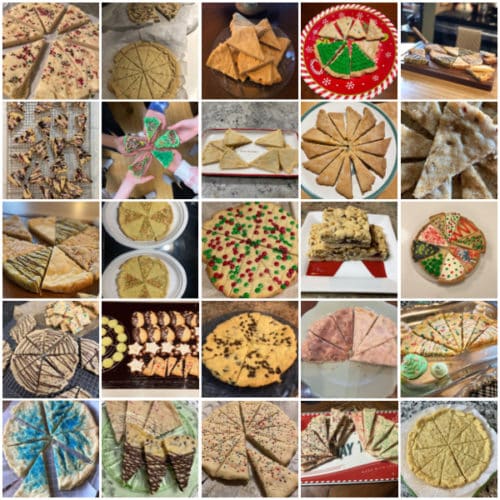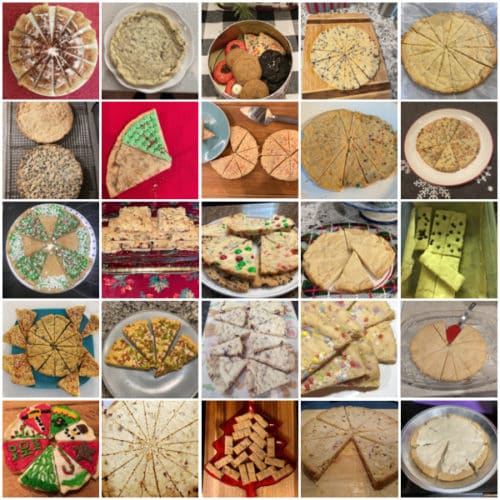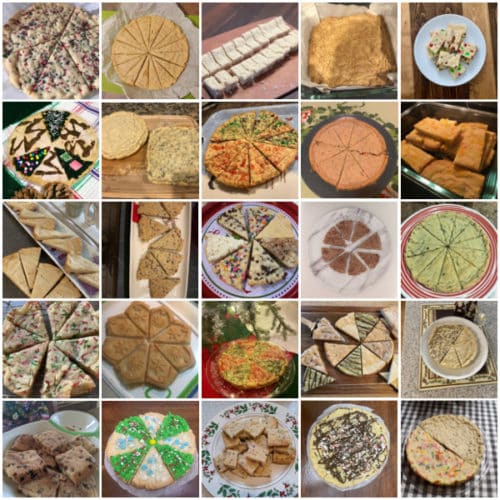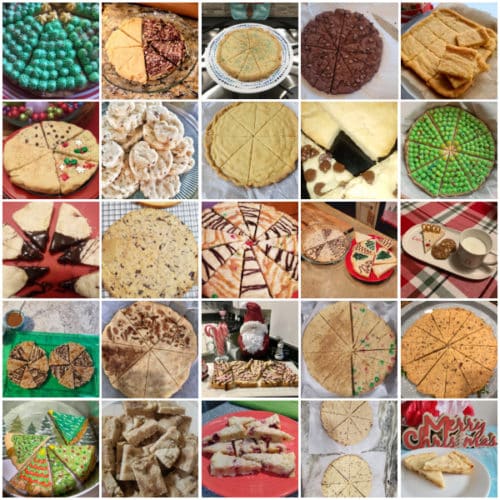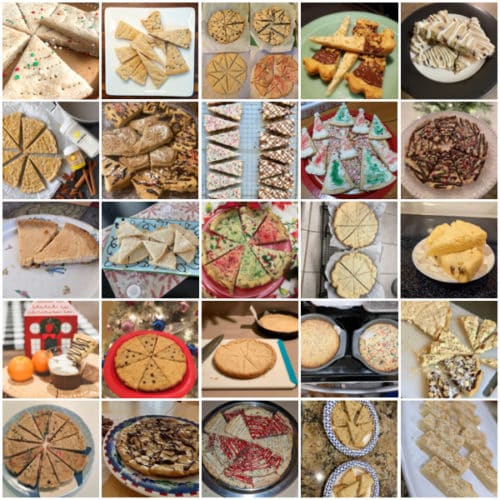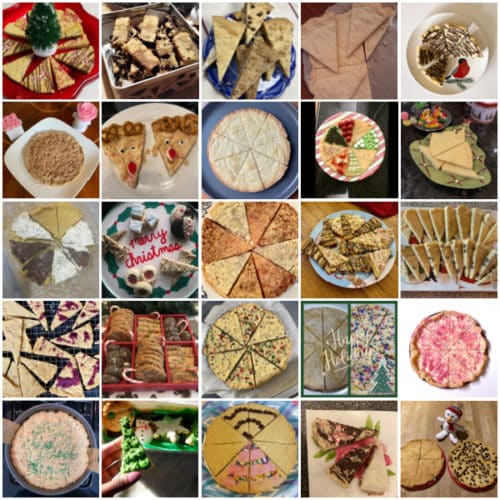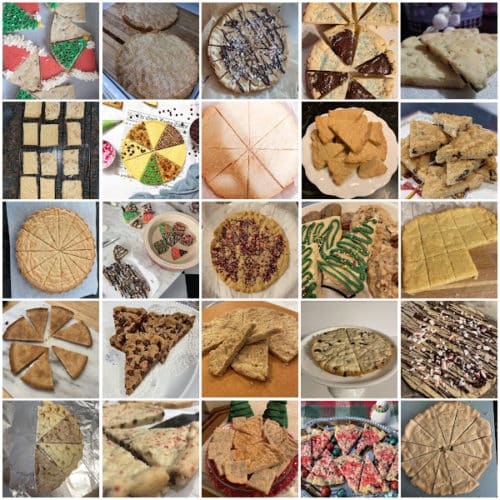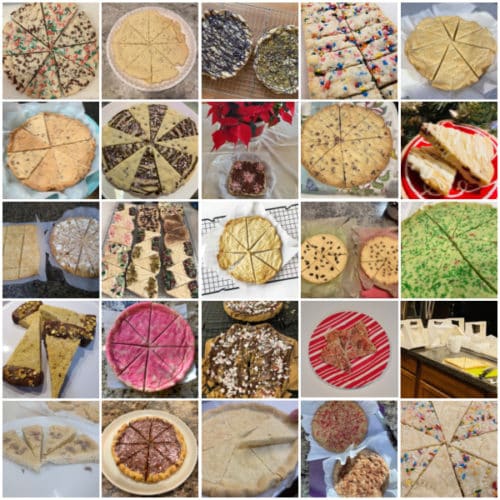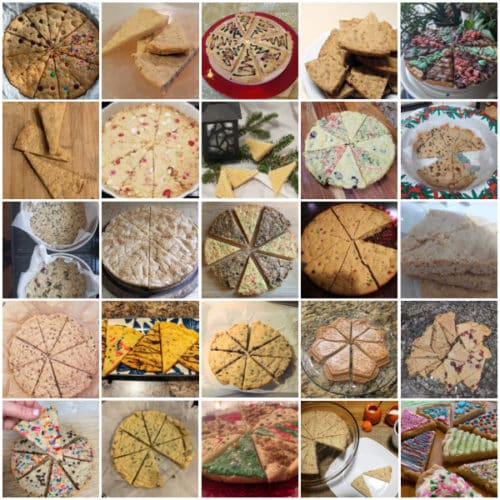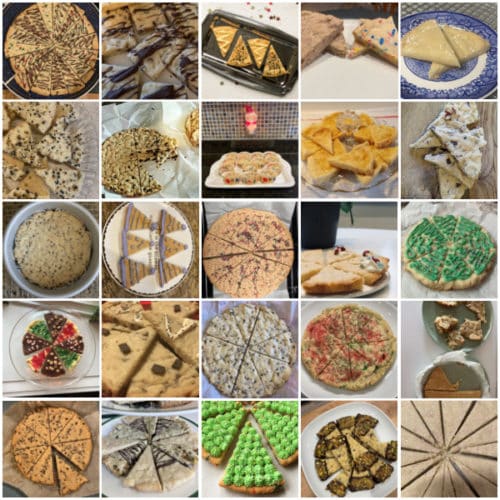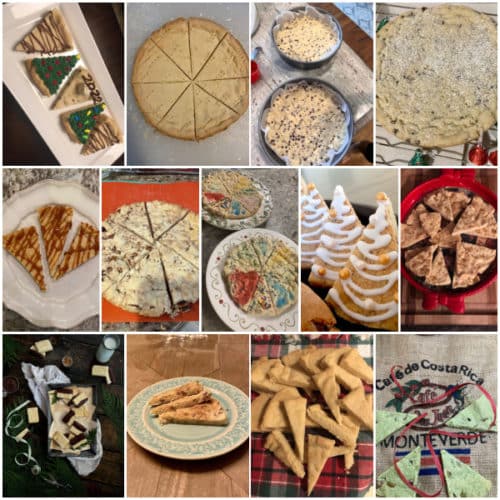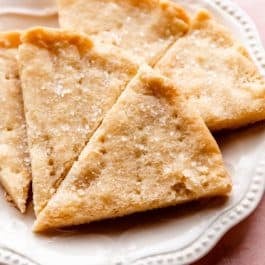This recipe is part of my annual holiday cookie countdown called Sally’s Cookie Palooza! I can’t tell you how many times I’ve seen the word “wedges” while putting this recipe together. But it’s been so many times that I’ve accidentally typed “shortbread wedgies” at least twice now. Anyway, let me tell you about these shortbread WEDGES! These are my perfect shortbread wedge cookies flavored virtually however you’d like, baked in a cake pan, and cut into triangles/wedges. With no add-ins, they’re pleasantly sweet with rich butter and vanilla flavors. You’ll divide the dough in half to make 2 pans of cookies, so you can flavor each half of dough different ways. Creativity is welcome here!
You Will Love This Shortbread Recipe:
6 ingredient dough with lots of optional add-ins No rolling pin, no cookie cutters 1 mixing bowl No dough chilling—ready in under an hour, making it the perfect recipe to tackle while waiting for your other Christmas cookies to chill. This recipe also joins 30+ others in my collection of Quick Dessert Recipes—ready in 1 hour or less! Cookies will never over-spread Another egg-free baking recipe Delicious alongside coffee, tea, & hot chocolate Texture: crumbly, yet tender Flavor: buttery, vanilla, mildly sweet
Traditional shortbread recipes are 1 part sugar, 2 parts butter, and 3 parts flour. Sometimes there’s vanilla and salt, but there’s no egg and no leavening. Delicious, for sure, but I’ve been making shortbread cookies with a slightly different ratio. Some of my favorite recipes include these flavored cherry almond shortbread, pecan shortbread & brown sugar shortbread that are icebox/slice & bake style, and sweet & salty chocolate pistachio shortbread. I also make chocolate cashew shortbread wedges, a recipe you can find in my cookbook along with a few other variations!
6 Ingredient Shortbread Dough
Overview: How to Make These Shortbread Cookies
These shortbread wedge cookies are great for beginners because the prepwork is fairly simple and the dough comes together in just 1 bowl. The video tutorial and full printable recipe are below, but let me walk you through the basics with step photos so you know what to expect. Start by creaming the butter and sugar together, and then add the vanilla and salt. Finally, mix in the flour and cornstarch. Beat on low speed to begin bringing all of the ingredients together. The dough will be very crumbly at first, but then clump up when you turn up the speed. Let me show you the difference. Below, left: Dough is crumbly and dry at first. Below, right: Dough finally clumps together. Divide the dough in half and press into 2 lined 8-inch cake pans. If you’re shopping for new pans, I use and love these cake pans and these cake pans. If you use 9-inch cake pans instead, the cookies will be quite thin unless you add an add-in such as nuts, dried cranberries, or chocolate chips. Now you’ll have 2 pans of pressed dough. Top with optional coarse sugar and dock with a fork so steam can escape these butter-heavy treats. And whoops… my hand got a little heavy with the coarse sugar here. You don’t need quite as much unless you love the sweet crunch! Bake, cool, and then slice into 8 large, 12 medium, or 16 small wedges.
Can I Use This Dough for Other Shortbread Cookies?
Yes! Let me detail the specifics for you:
Shortbread Bars: Instead of wedges, bake this dough as shortbread bars in 2 8-inch square baking pans. Or bake the dough in 1 9×13-inch baking pan. The bars baked in a 9×13-inch pan will be quite thin unless you add an add-in such as chocolate chips or nuts. The bake time for bars in either size pan is about the same as below, but begin checking at 25 minutes. They’re done when the tops and edges are very lightly browned. Thumbprints: You can use a variation of this dough to make thumbprint cookies. Substitute the cornstarch for the same amount (about 30g or 1/4 cup) of all-purpose flour. Chill the dough for 3 hours. This is exactly the recipe I use when making raspberry almond thumbprints—and I add a touch of almond extract to the dough. Follow the assembly/baking instructions from that recipe. As a Shortbread Crust: Press the dough into a 9×13-inch pan and use as the crust for lemon bars. Or you can halve all of the ingredients in the recipe below and use as the crust for lemon blueberry tart, raspberry streusel bars, or apple pie bars. Each of these 4 linked recipes call for melted butter in the crust, but using today’s recipe provides a slightly sturdier and flakier foundation. Follow each linked recipe as instructed (including pre-baking the crust if necessary), only swapping in today’s dough.
I do not recommend using this recipe for shaped/cookie cutter shortbread cookies. The butter-heavy dough loses shape in the oven. Instead, I recommend my regular sugar cookies or the buttery shortbread in my cookbook. And finally, let’s add some goodies!
Flavors & Add-Ins
Add liquids/zest when you add the vanilla & beat in dry add-ins (such as nuts, sprinkles, or chocolate chips) on low speed after the dough is all mixed/clumped together. If adding spices such as cinnamon, add when you add the flour & cornstarch. *You can also divide the dough in half and beat half of these add-ins (including liquids/extracts if needed) into half of the dough. Other add-ins: 1 cup (about 130g) chopped any nut variety, 3/4 cup (about 115g) dried cranberries or raisins, 1 cup (about 180g) flavored morsels such as butterscotch or white chocolate, 1 teaspoon your favorite extract, 1 Tablespoon (15ml) citrus juice such as lemon or orange + 2 teaspoons zest, or 3/4 cup (about 115g) Heath Bar Bits O’ Brickle English Toffee. Feel free to combine add-ins such as citrus juice, zest, 1/2 cup white chocolate chips, and 1/2 cup dried cranberries. These are the add-ins I’ve tested, so let me know if you try others!
See Your Cookies!
Many readers tried this recipe as part of a baking challenge! Feel free to email or share your recipe photos with us on social media. 🙂

